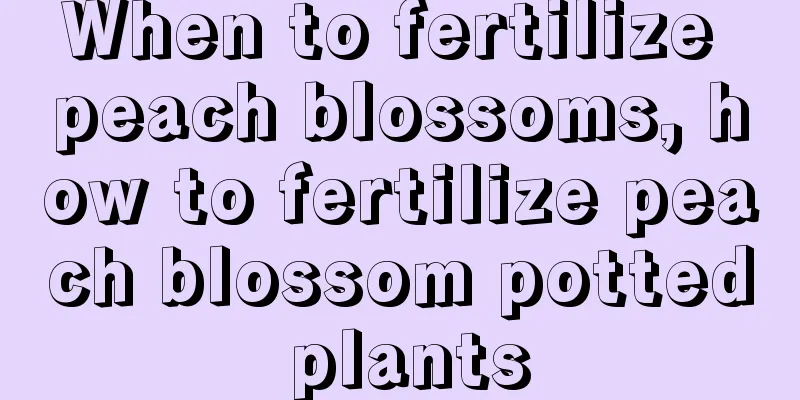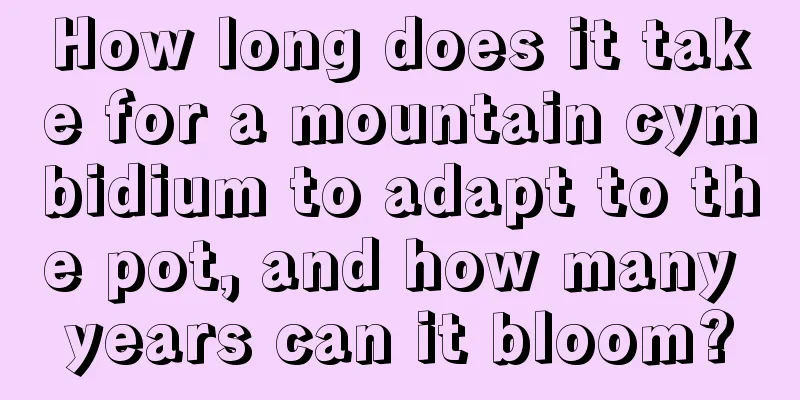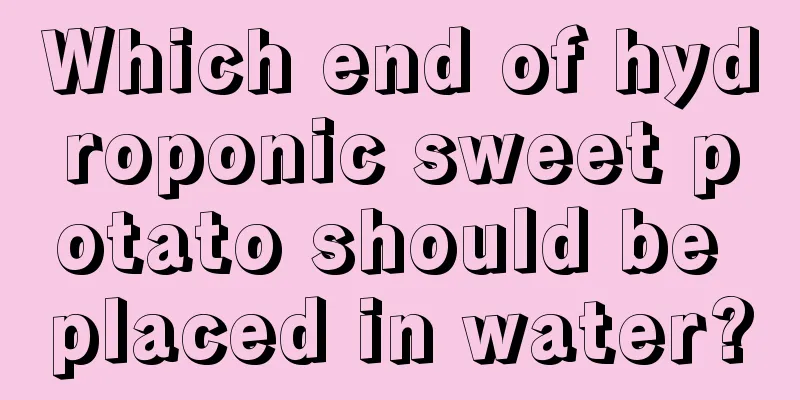When to fertilize peach blossoms, how to fertilize peach blossom potted plants

1. Fertilization timePeach blossoms are generally fertilized during the growing season, which is spring, summer and autumn. It should be noted that you should not apply fertilizer when it is blooming, otherwise it will cause the flowers to fall. In winter, due to the drop in temperature, the growth of the plants slows down and begins to enter a dormant period. The demand for fertilizer is not high at this time, so no fertilization is needed. Fertilizing in winter can easily cause fertilizer accumulation, which can cause fertilizer damage. 2. Fertilizer selectionPeach blossoms have different fertilizer requirements at different stages of their growth. In spring, nitrogen fertilizer should be used as the main fertilizer. This fertilizer can promote the growth of branches and leaves and make it grow stronger. Before flowering, it is necessary to apply more phosphorus and potassium fertilizers to promote flowering. In summer, since the flowers of the plants have faded, some fertilizer is needed, so phosphorus and potassium fertilizers should also be applied once. Organic liquid fertilizer is usually used in autumn and can be applied once every 20 days. Phosphorus and potassium fertilizers should be added before winter to help the plants survive the winter better. 3. How to fertilizeFor different fertilizers, the fertilization methods are different. Base fertilizer is usually applied to the bottom of the pot when planting so that it can provide nutrients continuously. Solid fertilizers require digging a hole in the potting soil and burying the fertilizer inside, generally away from the roots to avoid burns. If it is liquid fertilizer, you can water it directly. If it is foliar fertilizer, spray it on the leaves of the plant. IV. PrecautionsWhen fertilizing peach blossoms, you must control the amount of fertilizer. Usually the interval between fertilization is 20 days. If the plant is growing very lush, you can postpone fertilization. Generally, you should stop watering before fertilizing, and then water again the next day after fertilizing, so that the fertilizer can be better absorbed. |
<<: High-yield cultivation technology of bitter melon
>>: High-yield technology of sweet potato planted upside down
Recommend
Which month is suitable for planting cotton in the north?
When is cotton planted in the north? The planting...
Lily Flower Language
1. Flower Language Lilies bloom in many colors, t...
How to grow hydrangeas in water
1. Remove the leaves Generally speaking, it is be...
How often should I water dianthus flowers?
How often should I water dianthus flowers? Dianth...
Can mulberry trees survive by pruning?
Can mulberry tree pruning be transplanted? Mulber...
Tea tree cultivation time
Tea trees are moisture-tolerant and shade-loving,...
What kind of grass is best for sheep to eat? They are less likely to get sick. What kind of grass should be planted to have a short harvest time?
As the saying goes: Sheep eat all kinds of grass,...
How to distinguish male cloves from female cloves
the difference Clove Cloves refer to the flower b...
Rose cultivation method
1. Maintenance methods 1. Soil: Roses do not have...
How to identify rhubarb
1. Appearance Rhubarb is a perennial herb with la...
Which flowers are suitable for growing in autumn? These 6 kinds of flowers are easy to grow and beautiful!
Jasmine 1. The taste is light and elegant Jasmine...
How often should I water Gloxinia?
How often should I water Gloxinia? Generally, you...
How to make Bougainvillea bloom quickly again (how to make it bloom quickly again after it withers)
1. You need a variety of bougainvillea that bloom...
How to plant snapdragon seeds
How to sow snapdragon seeds Disinfection Before s...
If you do this when the spring taro leaves turn yellow, they will turn green in minutes!
There are many reasons why the leaves of taro tur...









